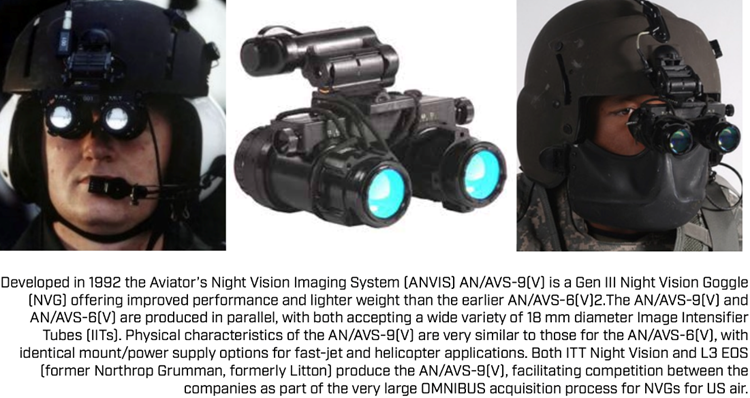Lesson 11 - Taking Flight After Dark: The Evolution of Night Vision in Aviation
Oct 12th 2023
When it comes to military technology, few innovations have been as pivotal as night vision goggles (NVGs). These extraordinary devices have transformed nighttime operations across various military branches. In this blog post, we'll dive into the fascinating journey of NVGs in aviation, shedding light on their evolution and impact on aerial missions.
The Early Days of Night Vision
Decades ago, ground forces in the Army were among the first to experience the advantages of night vision, thanks to the AN/PVS-5A goggles. These goggles were not just limited to the infantry; they found applications in various roles, from vehicle drivers to riflemen and unit leaders. One of the key advancements was the development of the "cut-away" mask, which allowed peripheral vision and in-cockpit use, making them even more versatile.
A Controversial Transition to Aviation
However, the incorporation of NVGs into aviation wasn't without its challenges. It followed a path similar to the development of aviation itself, filled with trial-and-error and occasional setbacks. In the 1980s, there were a number of nighttime accidents involving NVGs, particularly in military helicopters. This raised serious concerns about the safety and appropriateness of using NVGs in aviation.
A Turning Point: Safety and Training
The situation reached a critical point when several helicopter crashes occurred within Orange County, leading to a comprehensive investigative article by the Orange County Register. A congressional hearing was convened to address the issues surrounding NVGs in military helicopters. The outcome of this inquiry affirmed the necessity of NVGs for night flight operations but emphasized the need for better equipment and training.
The Evolution Continues: ANVIS (AN/AVS-6) and Beyond
Following the safety review, it became clear that improvements were needed. As a result, the ANVIS (AN/AVS-6) system was developed and subsequently evolved into the AN/AVS-9 (ANVIS). These advanced NVGs became the preferred choice for aviators, offering enhanced performance and safety features.
.
The Impact on Aviation
The integration of NVGs into aviation has had a profound impact on military operations. Pilots can now navigate through the darkest of nights with increased situational awareness, making them more effective and reducing the risk of accidents. These goggles have proven their worth time and again in various missions, from reconnaissance to search and rescue.
Conclusion
The journey of night vision goggles in aviation is a testament to human innovation and determination. Despite initial challenges, NVGs have become an indispensable tool for military aviators. Their evolution from the AN/PVS-5A to the advanced AN/AVS-9 (ANVIS) has transformed the way nighttime operations are conducted.
As technology continues to advance, we can only imagine the future possibilities for night vision in aviation. One thing is clear: these devices will remain a critical component of military aerial missions, ensuring our forces can conquer the darkness and achieve their objectives safely and effectively.
